Staying with falconry for just a little while
longer, you couldn’t be a kid from the north of England in the late sixties and
early seventies without having seen the film Kes. It was made in 1969
and tells the story of Billy Casper, a fifteen year old Barnsley lad without a
prospect or even a hope of a future, who raises and trains a kestrel and, for
the first time in his life, receives praise from a teacher when he gives an
impromptu talk about the bird in his classroom.
I’ve never really made my mind
up about Kes – on one hand it seemed to be saying that if you became
passionate about a subject it might be possible to rise above a hopeless
situation and find a way out but another part of me felt that Kes was
saying that it was pointless to even try to escape, as your dreams would be
trampled and you’d end up even more disillusioned than before you’d started.
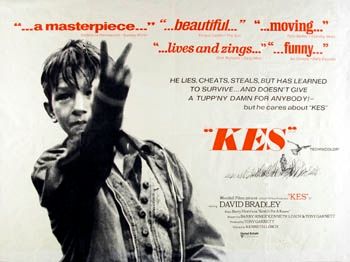 |
| Film poster for Kes |
Life in northern England, according to Kes, was unrelentingly awful; it
would batter you into submission as it had done to innumerable generations beforehand.
Schools were factories for the production of either bullies or victims, so
don’t get caught on the wrong side and adult life meant either another factory
of another sort or down the coalmine. The infamous North-South divide of
England condemned those who were unfortunate enough to be born Oop North to a
life of unending grimness and Kes was telling you to accept your fate
and know your place, you northern scum. (Little did we know at the time that
things would become a darn sight grimmer in the years to come, but that’s a
story for another day).
 |
| Barry Hines - A Kestrel for a Knave - 1968 |
The film Kes was based on a book by Barry Hines
called A Kestrel for a Knave, a title that comes from a book printed in
1486 called The Boke of St Albans. It was compiled by a Benedictine
prioress called Juliana Berners, who some claim to be the first authoress in
the English language, and has four parts; the first is about hawking, the
second about hunting, and third and fourth parts (often taken as a single
entity) are about heraldry, and the whole is a guide to the knowledge required
by a ‘gentle’ man of the day.
 |
| Facsimile edition - The Boke of St Albans - 1881 |
Three perfect copies of the original Boke
are known to exist and a facsimile copy was produced by William Blades in 1881.
It was reprinted in other forms many times, notably by Wynkyn de Worde, William
Caxton’s collaborator, in a 1496 edition that also included a Treatyse of
Fysshynge wyth an Angle, attributed to Berners but certainly not by her; it
is the first study of angling in English.
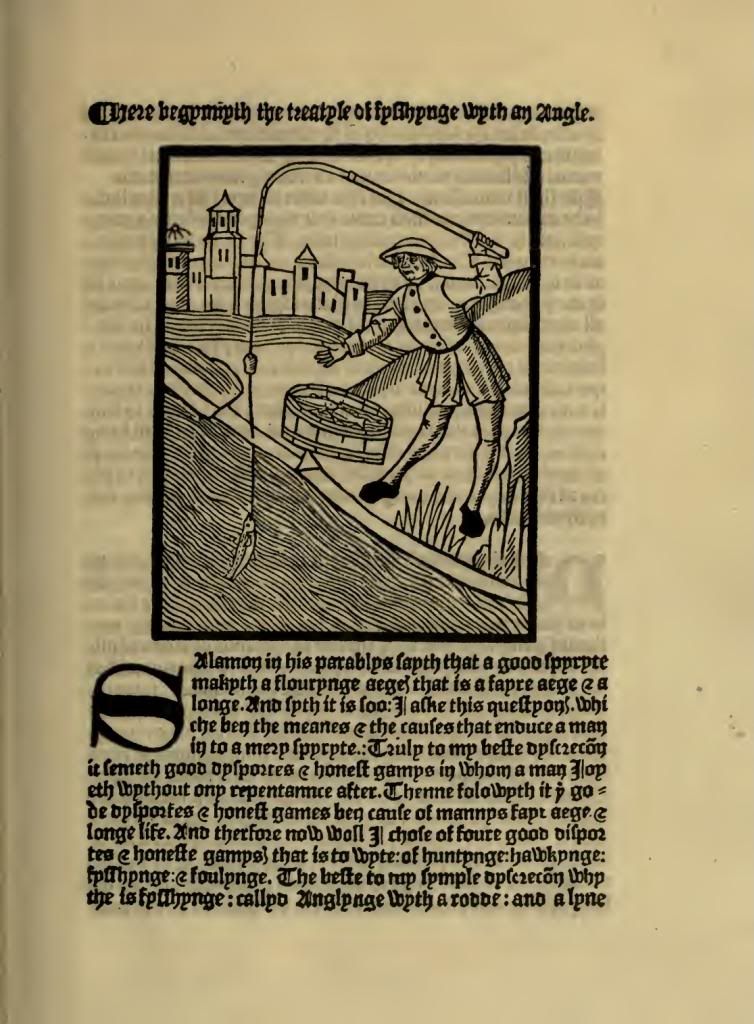 |
| Treatyse of Fysshynge wyth an Angle - 1496 |
At the end of the treatise on
Hawking, Berners includes a list of the birds deemed to be proper for various
ranks of society to own and fly. It begins with an Emperor, who may own an
eagle, a vulture or a merlin, and passes down the social order in turn – a
gyrfalcon for a King, a peregrine for an Earl, a sakret for a Knight, a goshawk
for a Yeoman, a sparrowhawk for a Priest and, at the very bottom of the list, a
kestrel for a Knave.
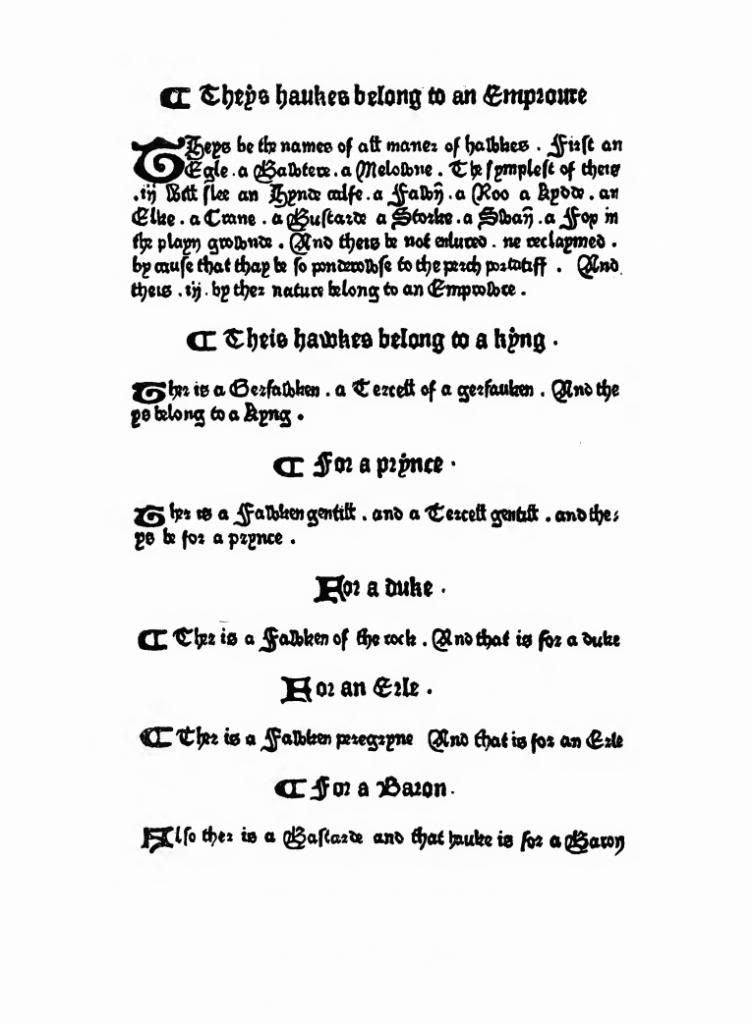 |
| List of Hawks from The Boke of St Albans - 1486 (1881 facsimile ed.) |
The kestrel is so small a falcon that it cannot take game
large enough to provide a meal for a human; it may be flown for sport but not
for the table. They are beautiful birds and although, like far too many
species, their numbers have declined, they are one of the few creatures that
have taken advantage of modern human works. The broad grass verges of railway
cuttings, motorways and dual carriageways provide the kestrel with perfect
hunting environments and they can frequently be seen hovering over these verges,
looking for small rodents, reptiles and insects.
 |
| The Kestrel |
They are one of the few
British birds that can hover stationary in the air, and this accounts for their
folk-name – the windhover – a title given to a sonnet of the same name by
Gerard Manley Hopkins, that strange Victorian clergyman-poet who both studied
and taught at Stonyhurst, Lancashire.
 |
| Stonyhurst College, Lancashire |
Hopkin’s poem The Windhover is
written in sprung rhythm, a method devised by him, in which a stressed syllable
is followed by any number of unstressed syllables and which incorporates
alliteration, assonance, onomatopoeia and rhyme. Hopkins was careful to keep to
a particular number of metrical feet within each line but the sprung rhythm
meant that he was not tied to the number of syllables within each of those
lines, allowing him greater freedom to develop the internal rhythm and imagery
of the poem. He was a Jesuit and his poetry was devoted to the glorification of
his God, and for Hopkins that included acknowledgement of the beauty and
wonders of the natural world; he dedicates The Windhover to Christ
Our Lord, and it begins,
“I caught this morning morning's minion, king-dom of daylight's dauphin, dapple-dawn-drawn Falcon, in his ridingOf the rolling level underneath him steady air, and stridingHigh there, how he rung upon the rein of a wimpling wing.”
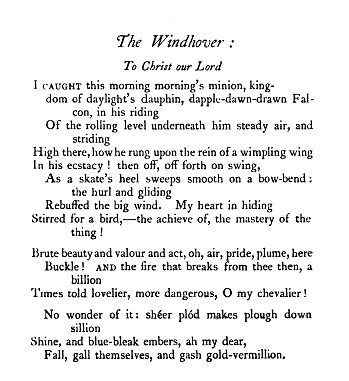 |
| Gerard Manley Hopkins - The Windhover |
This is magnificent poetry, Hopkins’
skill with language matching the artistry of the falcon itself; the
alliteration of the first two lines is unforced and flows as naturally as a
conversation, the rhythm within the lines drives the sonnet forward as Hopkins
manages that speed to mimic the hovering of the bird, at once almost stationary
and suddenly darting and diving. He places words with lapidary precision – look
at that ‘rung’ in the last line, which commonsense would say ought to be
‘hung’ instead, to fall in with the alliteration of ‘High there, how
he’, but is much more effective, not least for its unexpectedness, but also
for the associations that the word ‘rung’ brings with it, the thought of
bells ringing, the steps on ladders, the wringing of hands, wrung as twisting
and turning, and it also allows for the alliterative ‘rein’ of the next
stressed syllable. To quote from a little later in the poem, you cannot help
but be impressed and in awe of “…the achieve of, the mastery of the thing!”
This sonnet is a thing of wonder and I hope you seek it, and other works by
Hopkins, out; they are well worth the effort of a little re-reading.
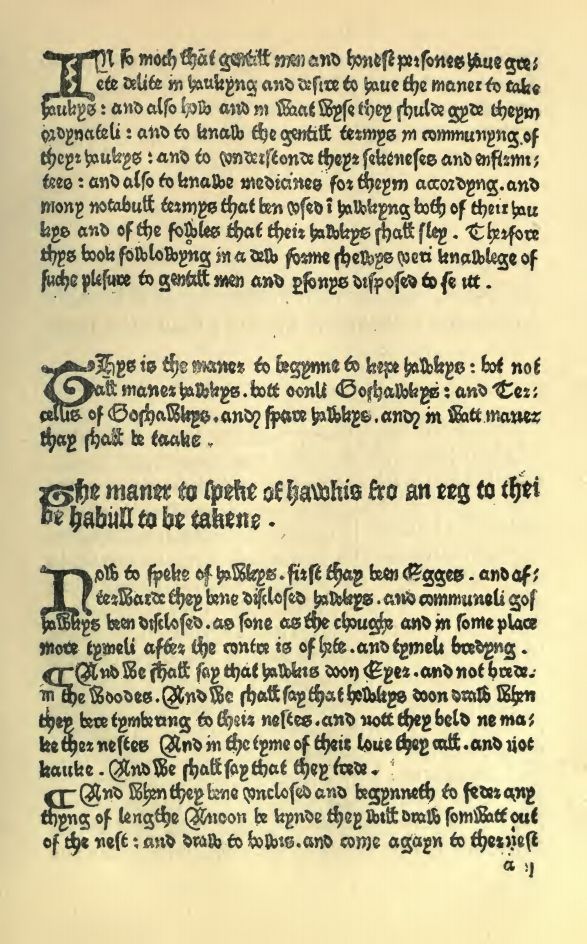 |
| Prologue - Hawking - The Boke of St Albans - 1486 - (1881 facsimile ed.) |
And here
we come full circle, as Hopkins’ windhover, his kestrel, his Kes,
offers hope as he writes how,
“… sheer plod makes plough down sillion Shine,”
which means, put another way,
that hard work and application can make even the black earth shine (sillion
is a word invented by Hopkins, and means a furrow turned over by the blade of a
plough. It is linked to the French word sillon meaning ‘a furrow’).
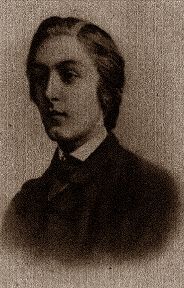 |
| Gerard Manley Hopkins |
Hopkins lived in Lancashire (and other places Oop North too), and knew that,
regardless of common supposition, it is a most beautiful place to live. Yes,
there are (were?) the dark, satanic mills and grim poverties of pockets and
hopes there have always been, but there is also the vast majesty of the fells
and the moors and the crags, the free openness of skies, minds and hands, the
wildness of wilderness and magnificence of a windhover that buckles with fire
as it breaks and stoops and suddenly your heart is stirred by a bird.
No comments:
Post a Comment